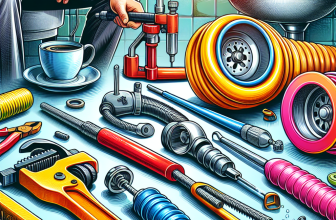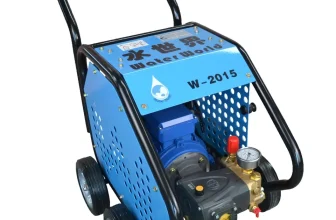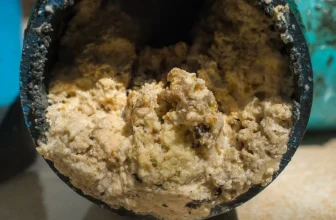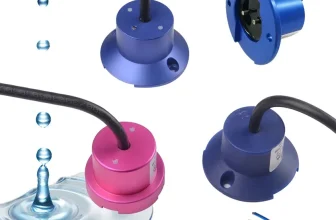A drain sock, also commonly known as a stormwater filter sock or a sediment filter sock, is a simple yet highly effective tool designed to filter runoff water before it enters a drainage system. This cylindrically shaped device, often resembling a sock or a tube sock, is designed to fit into a drain and effectively restricts the passage of unwanted debris, sediments, and pollutants while allowing water to flow seamlessly into the drain. This principle of operation makes drain socks essential in preserving the integrity of drainage systems while also protecting the larger environment from potential pollutants.
Brief discussion on its use and importance
The use of a drain sock has gained increasing prominence in various sectors. It plays a critical role in maintaining a clean and functional drainage system by acting as a barrier against pollutants. This simple, yet effective tool can have profound effects on environmental protection. Without it, harmful residue and debris from industries, commercial establishments, and even households would directly enter the drainage systems and even our water bodies. This can not only block the drains but also contaminate water resources, harm aquatic life, and significantly affect the environment overall. A drain sock, therefore, is an essential household and industrial tool for responsible waste management.
Detailed Description of a Drain Sock
Description of physical features and sizes
A drain sock, also referred to as a drain filter or pipe sock, is a tubular-shaped device specifically designed to fit snugly inside drains of various sizes. Its physical characteristics can stand out, making it easy to spot and use appropriately for intended purposes.
Most drain socks typically range from 10 to 60 inches in length, with some products scaling up to 72 inches for larger drain applications. The diameters also vary from project to project, with common measurements being 4 to 12 inches. However, customization is possible to accommodate unique drainage dimensions.
In terms of the sock’s appearance, it is often cylindrical, akin to elongated mesh bags. The surface has a somewhat coarse texture due to the fabric mesh, which is designed to capture substances while allowing water to flow through. Drain socks are usually white, grey, or black, but color does not impact functionality. It’s also worth noting that most of these devices are lightweight and flexible, making them easy to install and remove when necessary.
Overall, drain socks come in a variety of sizes and are relatively user-friendly given their lightweight and simplistic design. This broad range in size allows for versatility and customization, ensuring a fit for virtually any drain pipe, thus making the effective prevention of pollutant entry into drainage systems possible.
Material composition
Drain socks are typically composed of robust and durable materials designed to withstand the rigors of regular use, resist the abrasive impacts of flowing wastewater, and the harsh conditions of overall wastewater chemistry. The most common materials used for drain socks are synthetic, geo-textile fabrics.
These fabrics are often constructed from polypropylene or polyester- high-strength synthetic polymers that are resistant to wear, tear, and environmental degradation. Not only do these materials help the drain sock retain its overall shape and function, but they also offer the added advantage of being resistant to specific chemicals found in wastewater. Consequently, these materials significantly increase the longevity of the drain sock, guaranteeing efficient and steadfast performance over time.
Furthermore, the fabric used for drain socks is permeable, which is critical to their function. This permeability allows water to flow through while effectively capturing debris, sediment, and other larger particulates.
Some drain socks also utilize an activated carbon core. This activated carbon works to absorb and neutralize harmful chemicals and contaminants in the water passing through the sock, providing an added level of protection against pollutants.
To ensure its structural stability and maintain its shape during use, the drain sock has a semi-rigid form, usually supported by an internal skeletal structure. The skeleton is typically made from a light but strong material like plastic, and it provides a rigid shape that ensures the sock remains open, allowing water to pass through freely even under the stress of heavy water flow.
How it functions
A drain sock operates in a simple yet effective manner. It is placed inside the drain pipe, taking on a dual role – acting as both a filter and a flow regulator. Water enters the drain pipe and makes its way to the stormwater system via the drain sock. Since the sock is equipped with a mesh-like design, it can trap any sediment, debris, or pollutants from the liquid that is directed into the pipe.
The precision in the size of its pores is key to its functioning. While being small enough to capture larger particles that may cause blockage or pollution, these pores remain sufficiently large to let the water flow through steadily. As a form of flow regulation, drain socks also help slow down the speed of water, reducing the erosive impact on the pipe.
It’s crucial to note that drain socks aren’t designed to treat or filter out chemical pollutants from the water. Their primary function is to filter out physical debris and sediment, thereby preventing these materials from building up inside the drain pipes.
As for maintenance, when the drain sock becomes clogged with debris, it needs to be cleaned or replaced to restore full functionality. By regularly checking and maintaining it, this straightforward yet efficient tool can greatly optimize your drainage system’s performance.
Uses and Applications of Drain Socks
Preventing pollutants from entering drainage systems
In many industries and even residential spaces, preventing pollutants from entering drainage systems is a major concern. It’s here that drain socks play a pivotal role. Essentially, they serve as a barrier to contain and filter out pollutants before they can reach the drainage system.
A drain sock is designed with effectiveness in mind. When installed properly, it can capture debris and other solid pollutants, preventing them from traveling down the drain. The porous fabric of the drain sock allows water to pass through freely while entrapping potential pollutants. Therefore, they effectively reduce pollution, ensuring uncontaminated water flow into sewer systems.
But the efficacy of drain socks isn’t limited to solid pollutants alone. Some drain socks are made with special materials such as activated carbon or hydrocarbons that can absorb or neutralize liquid pollutants including oils, heavy metals, and chemicals. These types of drain socks are especially useful in industries such as manufacturing, food processing, and automotive repair where waste fluids are common.
Particularly during rain showers or in areas susceptible to large amounts of runoff, drain socks can be a useful preventive tool. They help capture silt, sediment, and other contaminants that can often get washed into storm drains.
In conclusion, drain socks offer a simple, but effective solution for maintaining a non-polluted water system. They work as an initial filter that precludes the influx of pollutants into the drainage system, contributing significantly to an eco-friendlier environment.
Uses in various sectors (industrial, commercial, residential)
Drain socks have a wide range of uses across various sectors including industrial, commercial, and residential spaces.
In industrial settings, drain socks can be seen in manufacturing plants and warehouses, where potential pollutants like chemicals, oils, and other debris are commonplace. These filaments could end up flowing into the drainage system, causing clogs or environmental hazards. Drain socks effectively stop these pollutants from entering the drainage system, thus maintaining the integrity of the whole system and adhering to environmental regulations.
Commercial places like restaurants, grocery stores, and malls also benefit greatly from the use of drain socks. In these establishments, the drainage system faces onslaughts from food particles, packaging materials, plastics, and others. The efficient use of drain socks helps to prevent these types of waste from getting into and blocking the drainage system.
Residential homes are not left out when it comes to the application of drain socks. While the waste might not be as complex as in industrial or commercial settings, residues from daily activities like washing, cooking, and cleaning can get stuck in pipes overtime, causing blockages. Utilizing a drain sock diminishes the chances of a blocked pipe, a complication no homeowner wants to deal with.
In short, drain socks find useful applications across diverse sectors, offering simple and effective solutions to maintaining clean and efficient drainage systems.
How to Install and Use a Drain Sock
Comprehensive installation guide
To install a drain sock, follow this step-by-step guide:
-
Choose the Right Size and Type: It’s essential that the sock fits properly to be effective. They come in a range of sizes, so ensure you measure the diameter of your drain pipe before purchasing.
-
Unpack and Prepare: Once you have the correct size, remove the sock from its packaging and prepare it for installation. Some drain socks may come pre-equipped with ties to secure them in place.
-
Position the Sock: Insert the sock into the run-off point where it will catch the sediment and other waste. Make sure it fits snugly around or inside the drain opening, depending on the design. However, ensure it doesn’t block the flow of water completely.
-
Fasten Securely: If your sock came without attached ties, you would need to secure it. Use zip ties, or similar durable and waterproof fastening methods, to keep the sock in place. It needs to be secure enough to withstand heavy flows without becoming dislodged.
-
Monitor Regularly: After installing the sock, it’s crucial to regularly monitor its condition. Depending on how much debris it collects, it may need cleaning or replacing relatively frequently.
Remember, this is a general guide and the exact procedure may vary slightly depending on the specific type of drain sock you have purchased. Always read and follow the manufacturer’s instructions for the best results.
Maintenance and replacement tips
Regular maintenance and timely replacement of your drain sock is as important as the initial installation. Here are some valuable tips to keep your drain sock working efficiently:
-
Regular Cleaning: The filtering capacity of a drain sock can be significantly affected over time due to the accumulation of debris. Hence, it’s crucial to clean it periodically, depending on where you’ve installed it and the amount of pollutants it filters. A clean drain sock will have a higher capacity to filter pollutants and prevent unwanted materials from getting into your drain.
-
Inspection: Inspections should be carried out regularly to check for visible signs of wear and tear which might affect the performance of the drain sock. If you detect any issues, it may be time for a replacement.
-
Timely Replacement: Depending on the type and location of use, drain socks typically last between three to six months. However, it’s important to remember this can vary depending on its material quality, pollutant load, and type. Therefore, a scheduled replacement every few months is advisable to ensure the drain sock functions effectively.
-
Avoid Overfilling: Waiting until the drain sock is overflowing before deciding to clean or replace it could lead to a blocked drain. To avoid this, it’s advisable to not wait until the drain sock is filled to its maximum capacity before performing necessary maintenance.
-
Care During Removal: While replacement is necessary, careful removal of the filled drain sock is just as important. Hasty or careless removal could result in the pollutants inside the sock being accidentally spilled into the drain – defeating its purpose entirely.
Maintaining and replacing your drain sock with care is the key to ensure that polluted water is optimally filtered, contributing to the protection of our environment and upkeeping our drainage systems.
Safety precautions during installation and removal
While the installation and removal of a drain sock are generally simple procedures, it’s important to adhere to certain safety considerations to avoid causing any harm or damage.
The first safety precaution to remember is to always wear appropriate personal protective equipment. This includes wearing gloves to protect your hands from any contaminants that might be present in the drain or on the sock. Wearing safety glasses can prevent any splashes of water or debris from getting into your eyes, especially when removing an old drain sock full of pollutants.
Before placing a new drain sock into a drain, ensure that the drain is free of any large obstructions that could either damage the sock or impede its installation. Use a drain rod or appropriate tool to clear any blockages.
If a drain sock is particularly heavy or filled with pollutants, take care when removing it. Attempting to pull a heavy sock out of a drain could result in injury. Request assistance if needed, or use proper lifting techniques to avoid any strain.
In terms of handling, if the drain sock has been effectively filtering contaminants, it will be filled with pollutants that can potentially be harmful. Always handle these used socks with care and dispose of them properly according to local regulations. Do not attempt to clean and reuse these socks as the pollutants could be dangerous if mishandled.
As with all maintenance tasks, always be aware of your surroundings to ensure your safety during the installation and removal process of a drain sock. Never rush the process and ensure you have the right tools for the job. Following these precautions will ensure the task is done correctly and safely.
Importance and Benefits of using a Drain Sock
Protection of the environment
Using a drain sock plays a crucial role in protecting the environment. It serves as a simple, yet effective tool in controlling the discharge of pollutants from drains into water bodies. Pollutants such as oil, chemicals, litter, and other debris can significantly degrade the quality of water in rivers, lakes and oceans, and can subsequently harm flora and fauna.
Drain socks work by filtering out these pollutants before they have a chance to spread into our water systems. By trapping sediment, trash, oil and other residues, drain socks help minimize cases of water pollution. The reduction of such harmful materials means a healthier and cleaner environment for both wildlife and humans.
Its use can even be linked to a decrease in instances of algal blooms, which are notorious for deoxygenating water and creating dead zones in which aquatic life can’t survive. This is due to the role that drain socks play in preventing nutrients, which promote the growth of algae, from making their way into our water systems.
So, by implementing the use of drain socks, we are taking a small but significant step towards preserving our planet’s ecosystems and ensuring a sustainable future.
Prevention of drain blockage
Drain socks are a simple yet effective way to prevent the blocking of drainage systems. The key here is their mesh design, which functions as a filter, capturing large debris such as leaves, paper, and plastic that otherwise accumulate and lead to obstructions in our drainage system.
Beyond the obvious inconvenience, blocked drains can pose serious health risks. The standing water that results from blockages can become a breeding ground for bacteria and pests, such as mosquitoes, which are known to spread diseases. Drain socks help mitigate this risk by keeping drains clear and flowing freely.
Additionally, repeated blockages necessitate frequent cleaning and maintenance, often requiring professional help, which can be costly over time. By using a drain sock, the frequency of blockages reduces significantly, saving both time and money in the long run.
In the inevitable case of heavy rains and storms, a blocked drain can lead to flooding and subsequent water damage. This is another area where drain socks prove their worth by ensuring an unobstructed path for excess water, helping avoid costly repairs caused by water damage.
So, not only do drain socks help in maintaining a clean and efficient drainage system, but they also contribute to a healthier and safer environment.
Reduced maintenance costs for drainage
Using a drain sock can significantly reduce the cost of maintaining drainage systems. Usually, drains are susceptible to blockages caused by sediment, debris, and other waste materials. These blockages can lead to the need for professional and costly plumbing services, often to deal with serious issues like overflowing or broken pipes. Even regular drain cleaning procedures can accumulate significant costs over time. However, with a drain sock in place, these unwanted materials are effectively filtered out, preventing them from entering and clogging up the drain system.
With these blockages significantly reduced, the drainage system requires fewer services and less frequent upkeep, ultimately leading to less expenditure on maintenance. Also, the risk of expensive, unforeseen issues due to severe blockages is mitigated. The drain sock, which is relatively affordable and easy to replace, thus acts as a cost-effective drainage solution in the long run. This makes them an ideal choice for not only residential areas but also businesses aiming at efficient budgeting and reduced operational costs.
FAQs about Drain Socks
Average lifespan of a drain sock
The average lifespan of a drain sock largely depends on the type of pollutants it is filtering and the volume of these substances. In general, for a residential setting where the pollution level is low, a drain sock can last anywhere from six months to a year before it needs replacement. In commercial or industrial settings, where the pollutant load is typically higher, the drain sock might need to be replaced more frequently, sometimes even every few weeks. It’s important to regularly check your drain socks for accumulation of residues and replace them when they are no longer effective in filtering pollutants. Regular inspection and maintenance can greatly extend the lifespan of a drain sock, ensuring it works efficiently and effectively.
Cost and where to buy them
Drain socks are reasonably priced considering their significant benefits. The cost of a drain sock can vary depending on its size and material composition, ranging from as low as $10 up to $100 for larger, heavy-duty models. It’s essential to consider not just price, but also the quality and durability of the product.
Drain socks are readily available for purchase in a variety of places. They can be found in home improvement stores like Lowe’s or Home Depot in their plumbing section. They may also be available in some supermarkets or hardware stores.
For those who prefer shopping online, you can find a broad range of choices on e-commerce websites such as Amazon, eBay, and Alibaba. Business owners or property managers might consider bulk orders from commercial supply companies, which often provide bulk discounts. When ordering online, customers should factor in shipping and delivery times to ensure the sock arrives when needed.
Remember, it’s always a good idea to compare prices and read reviews before making a purchase.
How often to change or clean the drain sock
The frequency of changing or cleaning a drain sock largely depends on the volume and type of waste the sock is capturing. As a general guideline, you should aim to clean or replace your drain sock once it appears to be half full. Ignoring this can result in diminished functionality and could lead to overflows or blockages. In high use areas, this could mean weekly or even daily replacements. For less trafficked sites, a monthly check might suffice. For cleaning, simply turn the sock inside out and dispose of the captured waste appropriately, before washing it with a high-pressure hose. Always remember to follow local regulations for waste disposal to ensure environmental safety.
Conclusion
Drain socks play an integral role in maintaining clean, efficient, and eco-friendly drainage systems. They form a crucial line of defense, intercepting pollutants from entering our waterways and sewer systems. This has long-term benefits, contributing to the overall health of our environment and reducing the financial strain of costly maintenance work due to blocked drains. The simplicity of their design and ease of installation make them a practical solution for a wide variety of sectors, from residential to commercial and industrial uses. It is our collective duty to protect our environment, and employing a drain sock can be a small step with a substantial impact towards achieving this goal. The adoption of drain socks as a part of regular drainage maintenance is highly recommended as a cost-effective and environmentally-conscious choice.







